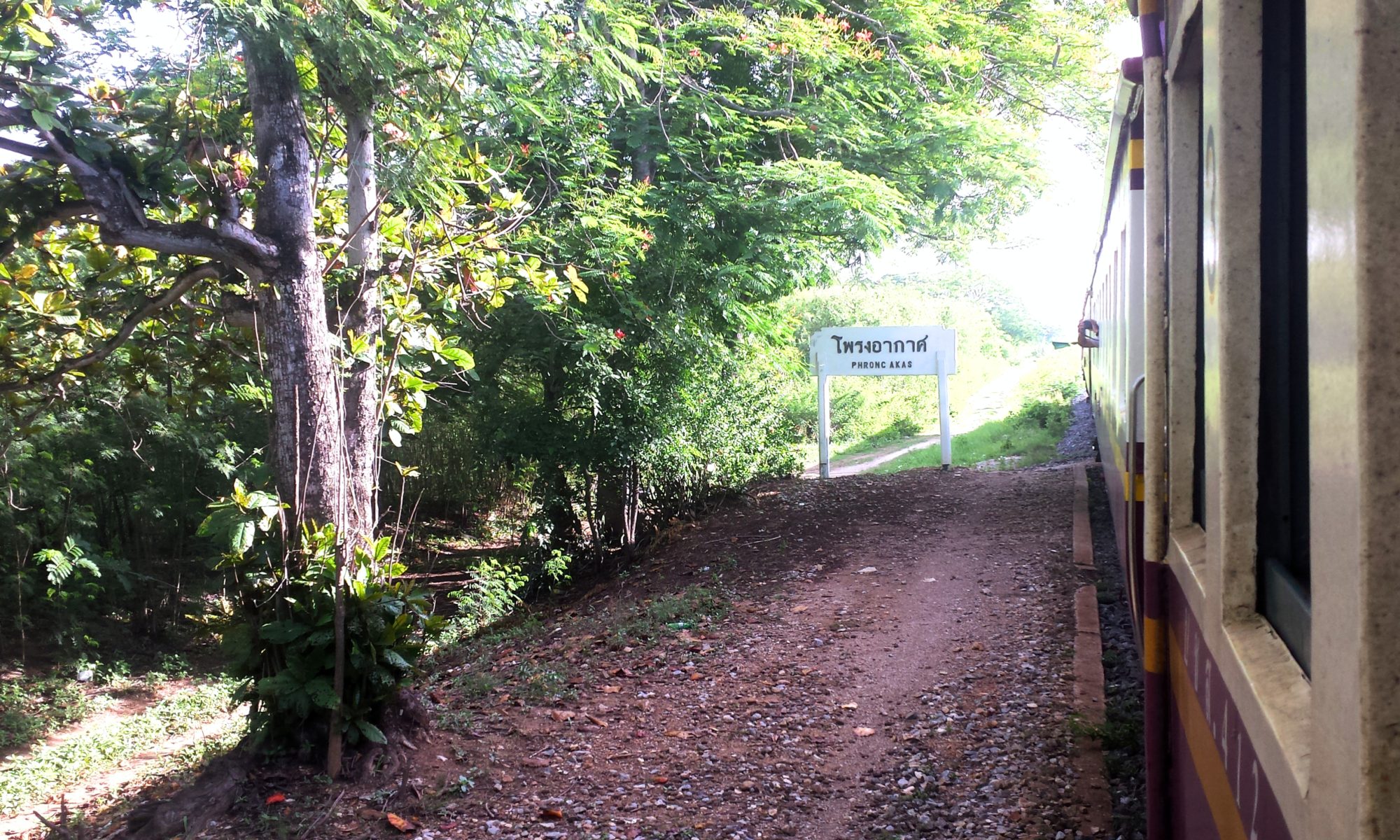If you are traveling the banana-pancake trail, chances are high that you will at one point cross the border between Thailand and Cambodia. When traveling from Thailand to Cambodia, assuming you depart in Bangkok, you have three options: plane, bus or train. While air travel is undoubtedly the fastest and easiest, it is also the most pricey. Also its not really thrilling. Traveling by road will be slow. A bit tricky at times and definitely uncomfortable at moments. BUT it is cheap and adventurous. If you follow the tips in this border crossing guide, there is really no way why going from Bangkok to Siem Reap should not be a breeze.
– Why you should pick the train over the bus –
From Thailand to Cambodia by bus
So first of all you have to decide between the bus and train. Taking the bus will set you back anywhere between 25 and 35 USD. IF you go by bus, I recommend booking a direct bus. Tis is easier and roughly the same price. It used to be the case that there were no direct buses and that any ‘direct service’ still included a change of bus at the border, but nowadays Grant Ibis and Nattakan actually offer direct buses. This means you can leave you luggage (take your valuables!) on the bus while crossing the border and getting your visa, and hopping back on into it for your journey onward. The buses leave from the Bangkok northern terminal ‘Mo Chit 2’.
Some drivers even process the visa for you for an additional fee. It is up to you whether you entrust them with your passport or not, but take in mind that not all travelers will be using this service. It will therefore not make traveling onward any faster.
The bus-drive will be lengthy and cost you all day. Considering Asian buses aren’t that comfortable it can be quite a bore.
The benefits of crossing the border by train
If you want to be able to move around, chat to locals hopping on and off all the while saving money you should definitely take the train. It will only set you back about 15 USD for the whole way,depending on your haggling skills. It will take you at least as long as the bus but will allow you to soak up the surroundings as the train has big windows and only moves around at about 30 kilometers per hour.
– Taking the train: the route –
Getting on the train from Bangkok to Aranyaprathet
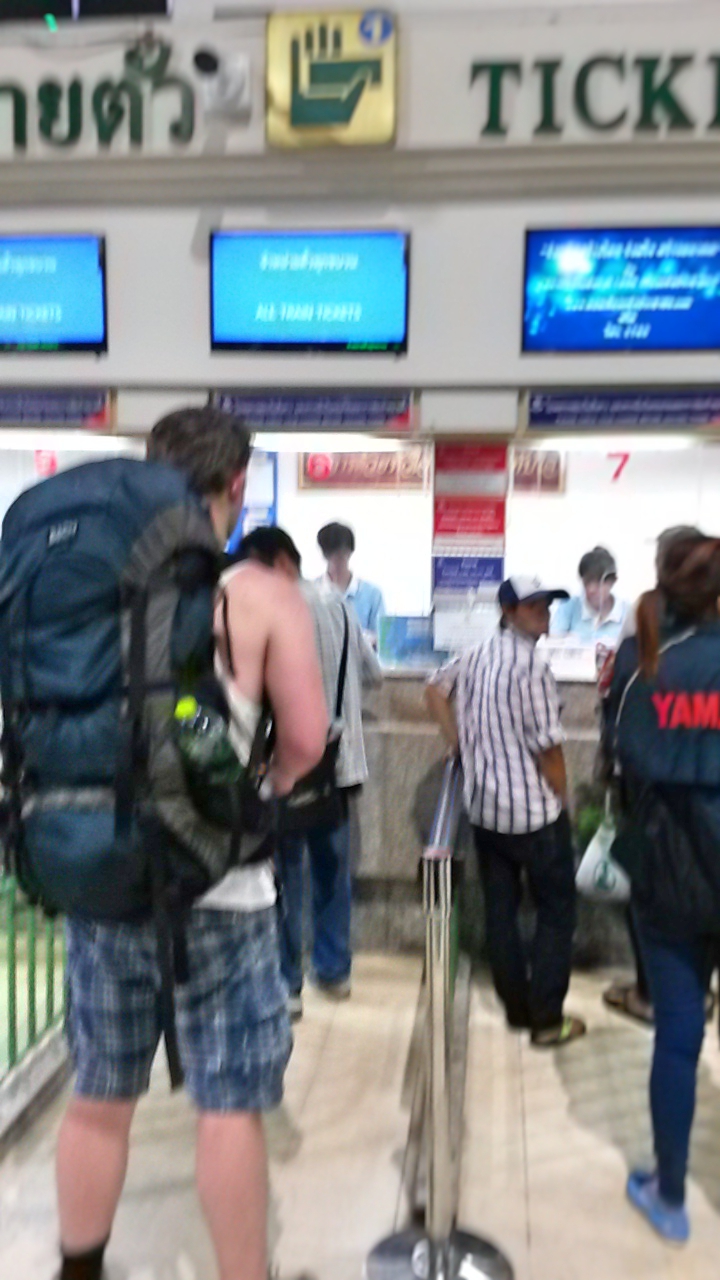
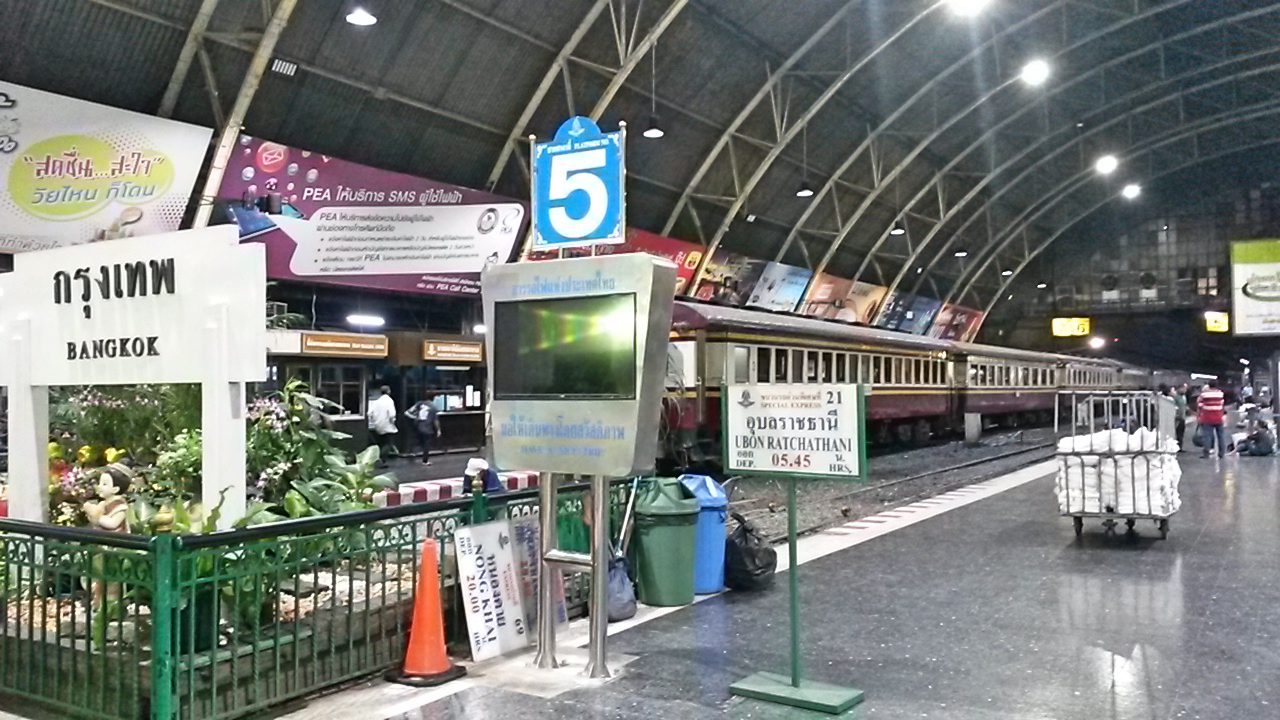
First you have to get to Bangkok’s railway station. If you stay at or around Khao San road (which I assume) you want to go to Hua Lamphong station. The station is also know as Krungthep so write both names down just to make sure. You can take the Chao Phraya watertaxi, but since the train leaves very early in the morning (05:45) this might not be the safest bet. The MRT subway has a stop there which is the cheapest option. If you are the kind of person that really wants to be there in time, even though the train will leave with a delay of at least 15 and more probably 30 minutes, you can take a taxi or Tuk-Tuk for about 100-200Baht. You can just buy your ticket at the station as they do not sell out. A ticket to Aranyaprathet, the last stop, costs 48Baht. The train will arrive there anytime between 11:30 AM -01:30 PM.
Crossing the Poipet border
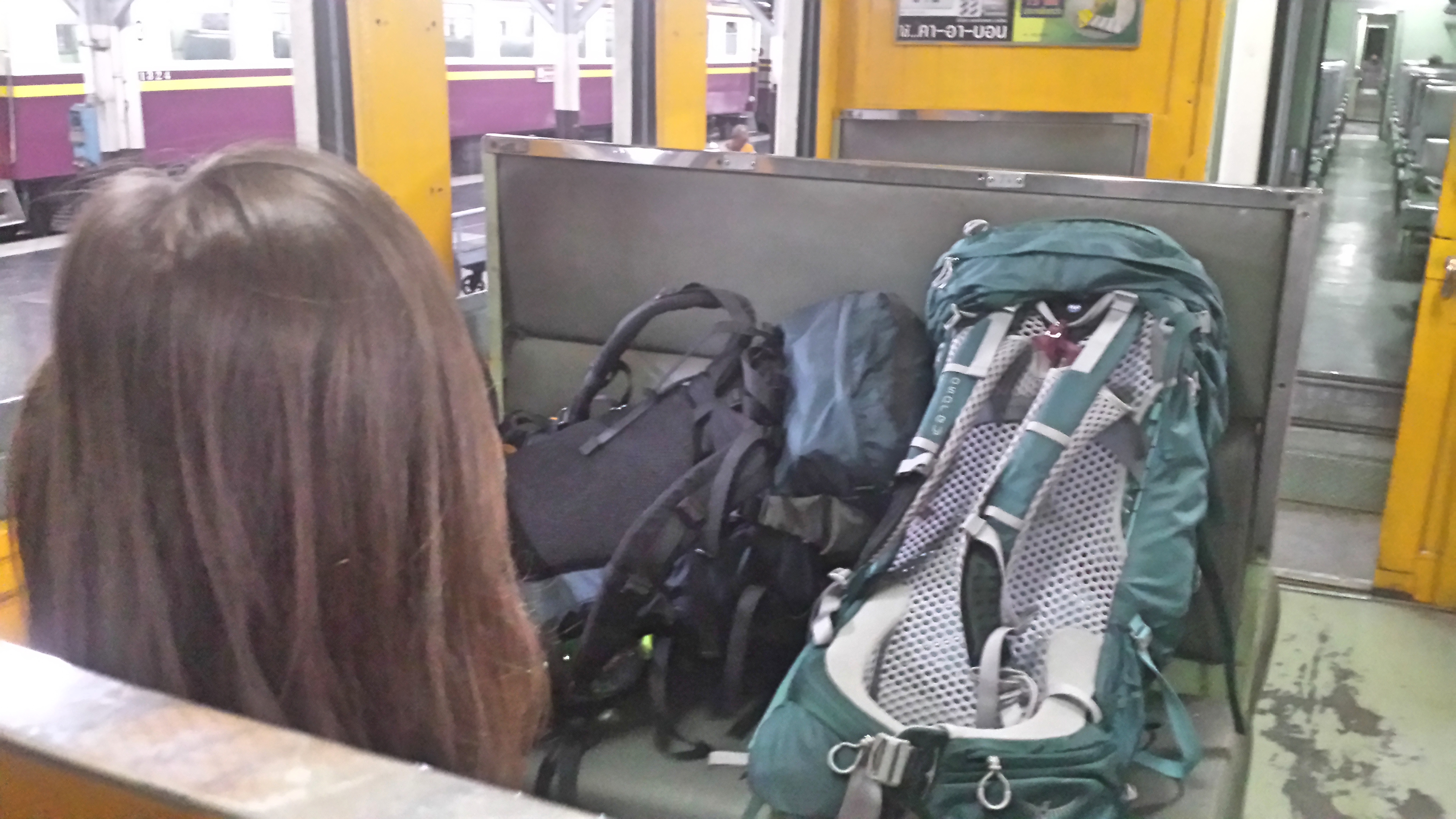
From the railway station of Aranyaprathet you take a tuk tuk to the actual border in Poipet. Tell the driver you want to go to the Cambodian border and not to Poipet. Make sure you agree on a price beforehand, 50-100 Baht, and do not step out until you can actually see the border. The border is a big archway that says ‘welcome to Cambodia’. You cannot mistake it for anything else. Here is where the scamming begins.
“Welcome to Cambodia man”
When we crossed the Poipet border from Thailand to Cambodia we were very clear on where we wanted to go. Still we were dropped off at a parking lot a few hundred meters from the border. Because we could see the border from there we got out. While leaving the parking lot three guys were sitting along the street saying ‘welcome to Cambodia man’.
After that our driver that follow us tried to usher us into a shabby office which according to him was a place where we could buy a cheaper visa. DO NOT FALL FOR THIS SCAM. You will first leave Thailand and then enter Cambodia. As long as you are not stamped out of the country, you should not worry about having a visa. Simply walk to the archway until you see Thai military police. This is where the Thai customs are and where you will be stamped out of the country.
Walk underneath the archway and enter Cambodia. Now you need to buy a visa. The signs and long cues of travelers are pretty clear. This should cost you 30USD, or nothing if your country has a waiver. Check beforehand, the Netherlands does not have a waiver. However the customs officer will try to make you pay an additional 100 Baht and will even point at a self-written sign behind him to emphasize that this is really mandatory.
How to avoid the second scam
I heard from many travelers and read on many blogs that there is no dodging this one, but I am here to tell you this is not true. Just smile, shake your head and give him your passport with the 30USD. Make sure you do not need change otherwise this will not work. Maybe he will let you line-up again but most probably he will give up the charade the second time around. The customs officer let me wait for about 5 minutes at my first refusal to pay the bribe and afterwards just processed my visa as normal.
The 100 Baht scam sometimes involves him explaining he needs the 100 baht to make a copy of your passport or to take your picture. For this reason you need to bring a copy and a picture yourself.
Getting to the bus terminal

Once you got your visa there will be a free shuttle bus waiting there to take you to the bus terminal. This bus terminal is quite terrible. You will have to pay around 10 USD for the last 3 hours of your trip and it does not matter much which company you book your ticket with as they will still just place you on a random bus. After an hour or two of waiting in this godforsaken place you will gladly accept the shitty bus they offer.
Alternatively you could try to fetch a direct bus at the border, before taking the shuttle. If they have free spots they will probably take you for the same amount and you will continue on your journey much faster. I had little luck here.
From the terminal to Siem Reap
From the bus terminal, buses leave to Siem Reap, Battambang or Phnom Penh. The bus to Phnom Penh will probably arrive late at night so if you want to arrive before nightfall I would not opt for this route. All routes have roughly the same fare. Phnom Penh might be a bit more costly. At the end of the afternoon you will arrive at the bus terminal in Battambang or Siem Reap. Both terminals will have tuktuks waiting to take you to your final destination.
alternatively you could walk but this is still a fair distance and will take you about an hour, a little less in Battambang, depending on where you are going exactly.
To sum it up, prepare yourself for a tiring day and this trip will not only save you a lot of money but is an adventure on its own. The views from the train are beautiful. The conversations with local elderly people going to and from the local markets the train stops by, priceless. There will be a few uncomfortable moment when exposed to scams but you will feel all the better when you pierce through them! When traveling South East Asia, these are the experiences that might not always seem enjoyable at the moment but will make for good conversation for years to come.
– What to bring –
This is what you should bring when you want to cross the Poipet border from Thailand to Cambodia by train.
- Plenty of water.
- Snacks.
- A passport-photo (even though you do not actually need one for your visa).
- A copy of your passport.
- The passport itself obviously.
- 30USD for your visa (even if your country has a waiver, just to be sure).
Depending on your level of confidence, 100 Thai Baht for a bribe at the border. I’ll assume you will not leave all your other travel gear behind after reading this, but at least these items are needed for the actual journey;).
Pop these into your bag for a trip to Cambodia
Waterproof Bag
A waterproof bag is a lifesaver when caught in the rain but also when kayaking, jungle-trekking or chasing waterfalls. If nothing else it gives you piece of mind when traveling with camera gear or other stuff that just can’t get wet. Get a 5L or 10L version so you can pack it within your daypack. I recommend this one from Mountain Splash. It’s durable and tough, transparent and it has got an easy handgrip.
Hand Sanitizer
Yes I view anti-bacterial hand sanitizer as essential. Not because I am germophobic but because this will save you from diarrhea and food poisoning. Most people that get sick from eating street food in South East Asia don’t get sick from the shitty hygiene at the street food stall but because they didn’t probably wash their hands. Use hand sanitizer, stay a happy traveler. This set got handy Carabiners to latch it on you any pack.
DEET bugspray
Unfortunately with tropic temperatures come tropic insect. The only known active ingredient to effectively deter mosquitos is DEET. Unfortunately it’s not very healthy which is why I do not recommend using 95% DEET solutions. 40% works perfectly in my experience.
Lonely Planet
Because its just the best compact travel guide out there. I always take a lonely planet with me for its practical information and background on certain sights. It is a lifesaver for when you find yourself unexpectedly off the beaten path in search of accommodation for the night. For me this is still the best way to read up on a destinations in long haul bus rides. You don’t need internet or battery-life and you can keep it dry in your recently purchased waterproof bag!

